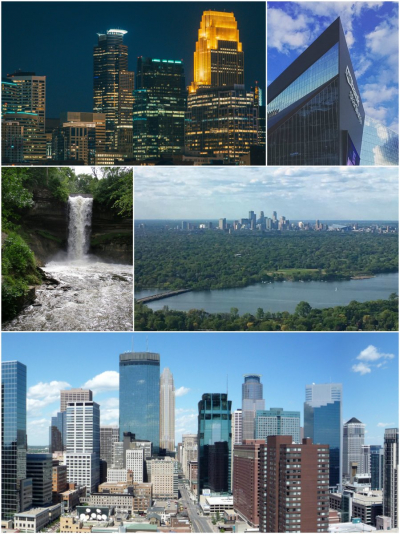The Minneapolis general strike of 1934 grew out of a strike by Teamsters against most of the trucking companies operating in Minneapolis, the major distribution center for the Upper Midwest. The strike began on May 16, 1934 in the Market District (the modern day Warehouse District). The worst single day was
Friday, July 20, called "Bloody Friday", when police shot at strikers in a downtown truck battle, killing two and injuring 67. Ensuing violence lasted periodically throughout the summer. The strike was formally ended on August 22.
With a coalition formed by local leaders associated with the Trotskyist Communist League of America, a group that later founded the Socialist Workers Party (United States), the strike paved the way for the organization of over-the-road drivers and the growth of the Teamsters labor union. This strike, along with the 1934 West Coast Longshore Strike and the 1934 Toledo Auto-Lite Strike led by the American Workers Party, were also important catalysts for the rise of industrial unionism in the 1930s, much of which was organized through the Congress of Industrial Organizations.
Minneapolis ( (listen)) is a city in the U.S. state of Minnesota and the county seat of Hennepin County. Abundant in water, with thirteen lakes, wetlands, the Mississippi River, creeks and waterfalls, Minneapolis had its origins in timber and as the flour milling capital of the world. It lies along both banks of the Mississippi River and adjoins Saint Paul, the state capital of Minnesota.
The city, inhabited by the Dakota Sioux prior to settlement, got its start due to the construction of Fort Snelling in 1819 eventually spurring growth along Saint Anthony Falls. With 429,954 inhabitants as of 2020, Minneapolis is the most populous city in the state and the 46th most populous city in the nation. Minneapolis, Saint Paul, and the surrounding area are collectively known as the Twin Cities.
Minneapolis has one of the nation's best park systems, and many of these parks are connected by the Grand Rounds National Scenic Byway. Biking and walking trails, some of which follow old railroad lines, run through many parts of the city, such as the historic Mill District by Saint Anthony Falls and around the lakes of the Lowry Hill area. Minneapolis has cold, snowy winters and humid summers. Some large corporations have their main headquarters in Minneapolis. The city is home to the Guthrie Theater as well as the First Avenue nightclub. Minneapolis is also the host to four professional sports teams.
The main campus of the University of Minnesota is in the city limits along with a few other institutions of higher learning. The downtown area of Minneapolis is served by a light rail system. The city has some highly rated hospitals.
Minneapolis has been a Minnesota Democratic-Farmer-Labor Party (DFL) stronghold for 50 years. The city uses a mayor council government system. Jacob Frey (DFL) has been mayor since 2018. The May 2020 murder of George Floyd, a Black man, by Derek Chauvin, a White officer of the Minneapolis Police Department in the city provoked global protests, arousing national and international attention on Minneapolis and racism.

1934Jul, 20
Labor unrest in the U.S.: Police in Minneapolis fire upon striking truck drivers, during the Minneapolis Teamsters Strike of 1934, killing two and wounding sixty-seven.
Choose Another Date
Events on 1934
- 23May
Bonnie and Clyde
Infamous American bank robbers Bonnie and Clyde are ambushed by police and killed in Bienville Parish, Louisiana. - 2Aug
Adolf Hitler
Gleichschaltung: Adolf Hitler becomes Führer of Germany following the death of President Paul von Hindenburg. - 26Sep
RMS Queen Mary
Steamship RMS Queen Mary is launched. - 9Oct
Alexander I of Yugoslavia
Regicide at Marseille: The assassination of King Alexander I of Yugoslavia and Louis Barthou, Foreign Minister of France. - 6Nov
Tennessee Valley Authority
Memphis, Tennessee becomes the first major city to join the Tennessee Valley Authority.

 English
English  español
español  français
français  português
português  русский
русский  العربية
العربية  简体中文
简体中文 